Original | Odaily Planet Daily ( @OdailyChina )
Author | Asher ( @Asher_0210 )
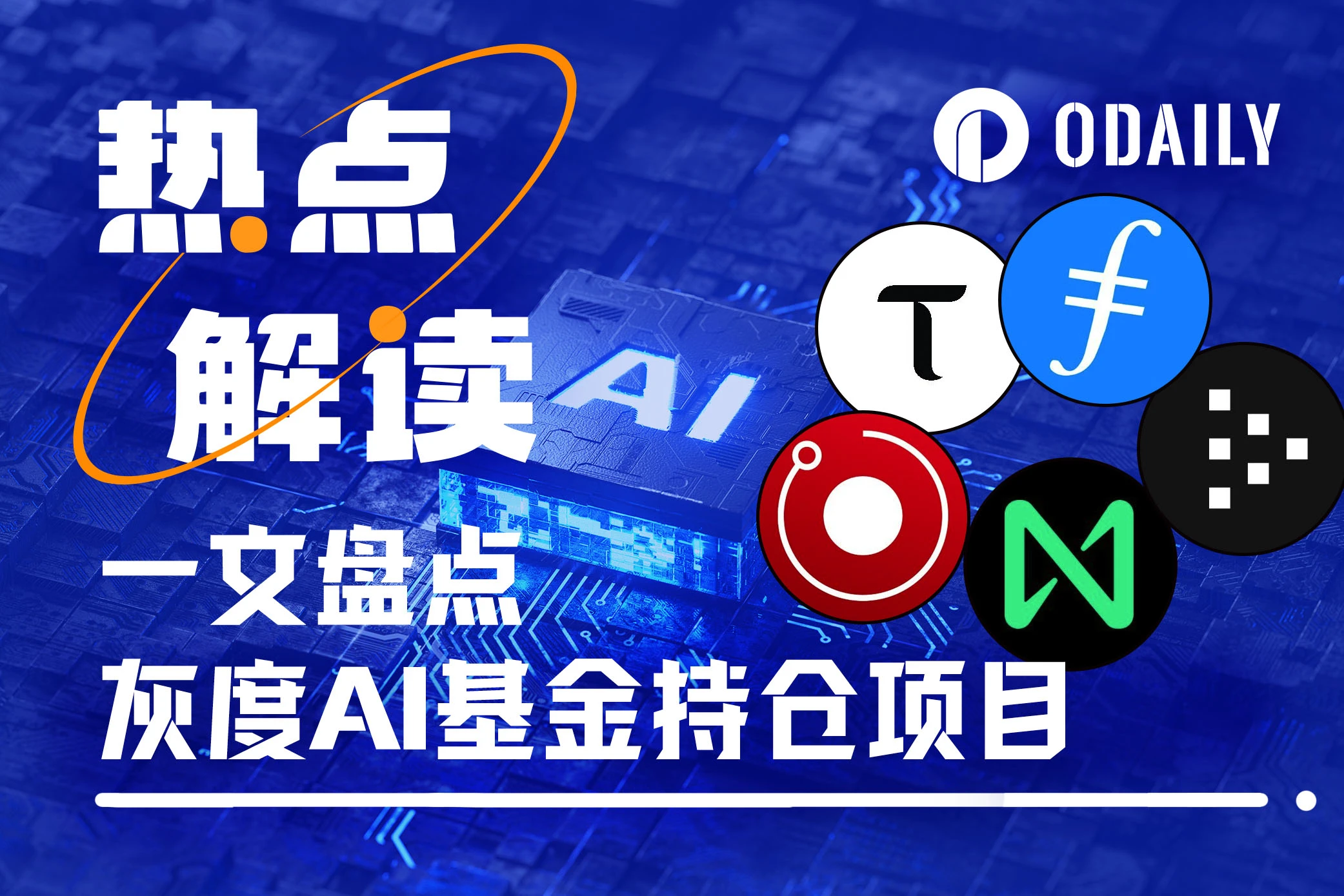
Recently, with the strong rise in Bitcoin prices, the altcoin market has ushered in a rare big rebound. Among them, the price performance of popular sectors such as Meme and AI is particularly outstanding. Last night, Grayscale announced the establishment of a new decentralized artificial intelligence fund - Grayscale Decentralized AI Fund LLC. The fund will focus on funding the following three key areas: artificial intelligence services, solving problems related to the use of centralized artificial intelligence, and developing infrastructure related to artificial intelligence.
In addition, Grayscale announced some decentralized artificial intelligence projects that have been included in the fund, including TAO, FIL, LPT, NEAR and RNDR . After the news was released, the AI sector generally rose, and these projects held by Grayscale all saw an increase of more than 5% in a short period of time. Next, Odaily Planet Daily will take you to quickly understand the basket of projects of Grayscales newly established decentralized artificial intelligence fund.
Bittensor (TAO)
Introduction
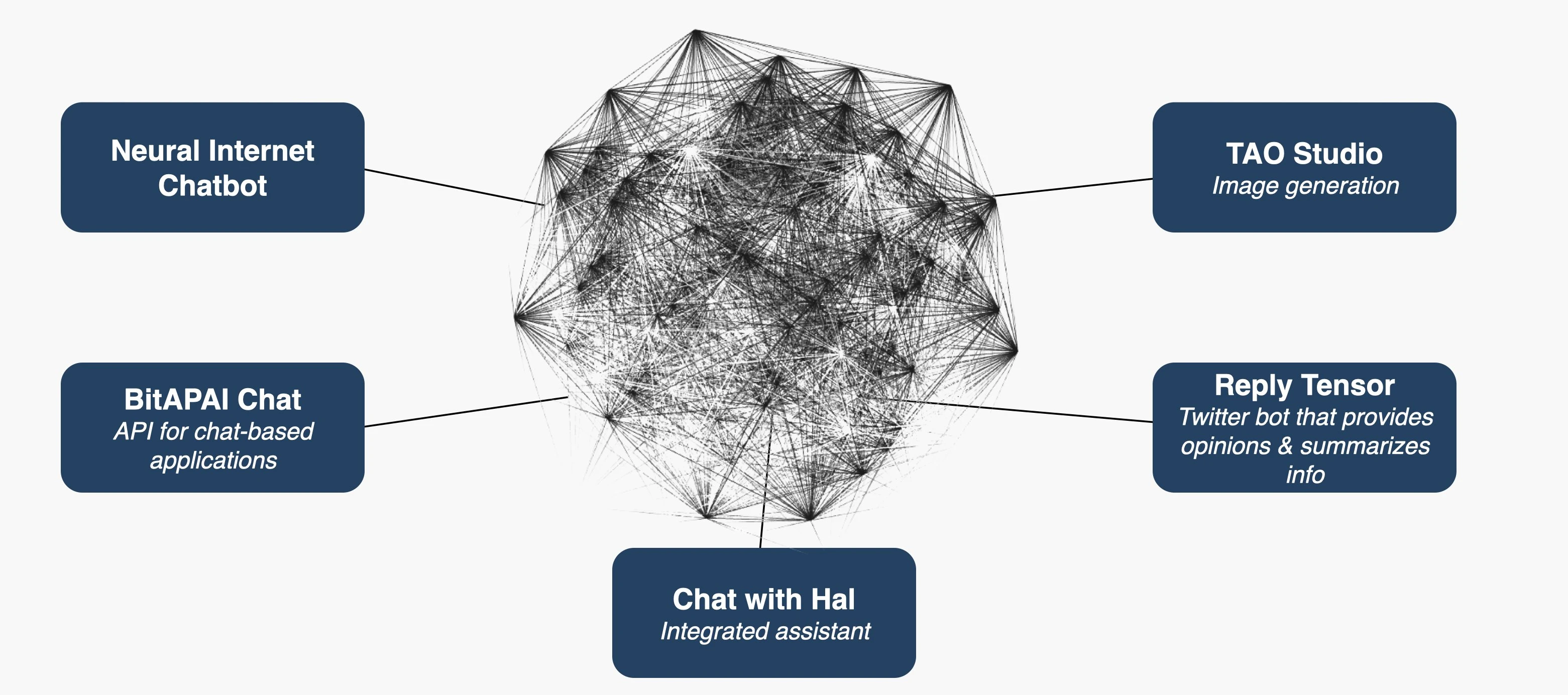
Image source: Official Twitter
Bittensor is a decentralized network that connects machine learning models around the world. By coordinating multiple specialized AI models, it improves the accuracy and efficiency of solving complex problems. This method combines the unique advantages of each model and produces more accurate and comprehensive results. Compared with the traditional single model method, the effect is better. In addition, Bittensor (TAO) is the first AI sector coin listed on Binance this year.
focus point
Capital support: According to Fortune magazine, Bittensor has received more than $200 million in venture capital. According to people familiar with the matter, Polychain, a venture capital firm founded by Coinbase early employee Olaf Carlson-Wee, incubated Bittensor in 2019 and holds about $200 million in Bittensor tokens TAO. In addition, according to another person familiar with the matter, Dao 5, an investment fund founded by Polychain alumnus Tekin Salimi, holds $50 million worth of TAO and is also an early supporter of the Bittensor ecosystem. Digital Money Group is another supporter of Bittensor, holding about $100 million worth of TAO.
Encountered theft: Bittensor immediately stopped all on-chain transactions to reduce losses after the attack on July 3. After fixing the vulnerability, the Bittensor mainnet was reopened on July 13 and Bittensor version 7.3.0 was released.
Filecoin (FIL)
Introduction

Image source: Official Twitter
The Filecoin project is a decentralized storage system. The Filecoin protocol was first proposed in 2014 and was originally developed as an incentive layer for the Interplanetary File System (IPFS), a peer-to-peer storage network. Like IPFS, Filecoin is an open protocol that builds on the properties of IPFS and has the same underlying P2P network and content addressing capabilities.
focus point
According to the Filecoin Q1 2024 status report released by Messari, there are several key points worth noting:
Active trading volume increased by 9% quarter-on-quarter, and utilization increased from 18% in 4Q23 to 23% in 1Q24;
As of the end of Q1 2024, more than 2,000 customers loaded data on Filecoin, of which 508 customers loaded large data sets (larger than 1,000 TiB), an increase of 9% from 465 in Q4 2023 ;
Pyth and Uniswap V3 (Oku.trade) were launched in Q1 24, and deposits on GLIF increased by more than 2 times month-on-month;
As of March 31, 2024, there were more than 3,400 unique contracts deployed on FVM, a 26% increase from 2,700 contracts at the end of Q4 2023 ;
Filecoin FVM TVL exceeded US$600 million in the first quarter of 2024, nearly doubling from the previous quarter.
In addition, the Filecoin Foundation recently established a partnership with artificial intelligence platform developer SingularityNET and data ecosystem collaboration infrastructure provider Nuklai.
Livepeer (LPT)
Introduction
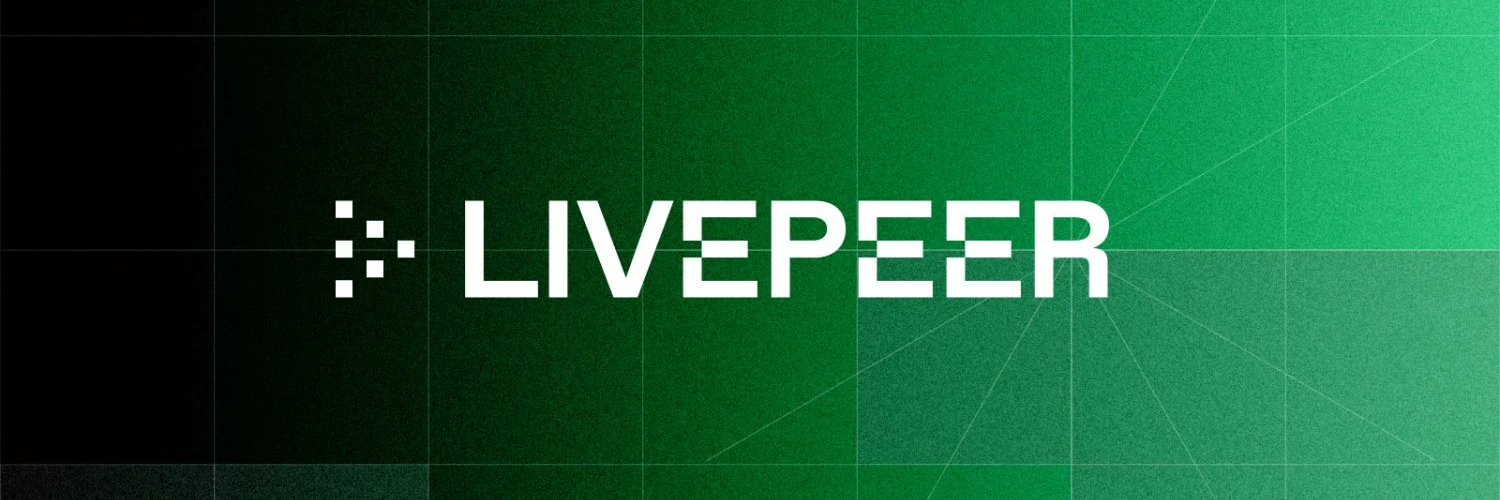
Image source: Official Twitter
Livepeer is a decentralized video streaming network built on Ethereum. As a scalable platform-as-a-service, it provides a solution for the real-time media layer in the decentralized development stack for developers who want to add live or on-demand video to their projects. Livepeer is able to improve the reliability of video streaming from centralized broadcast services while reducing the costs associated with it by up to 50 times. After OpenAI released Sora on February 16 this year, Livepeer announced that the community will work to introduce these features to the Livepeer network in the coming months as part of the AI video program, thus officially starting a new narrative for AI video.
focus point
According to Messari research data, driven by live streaming platforms, the usage of the Livepeer network increased by 31% month-on-month and reached an all-time high in the first quarter of 24. In addition to transcoding, Livepeer also plans to introduce AI video computing capabilities to its network.
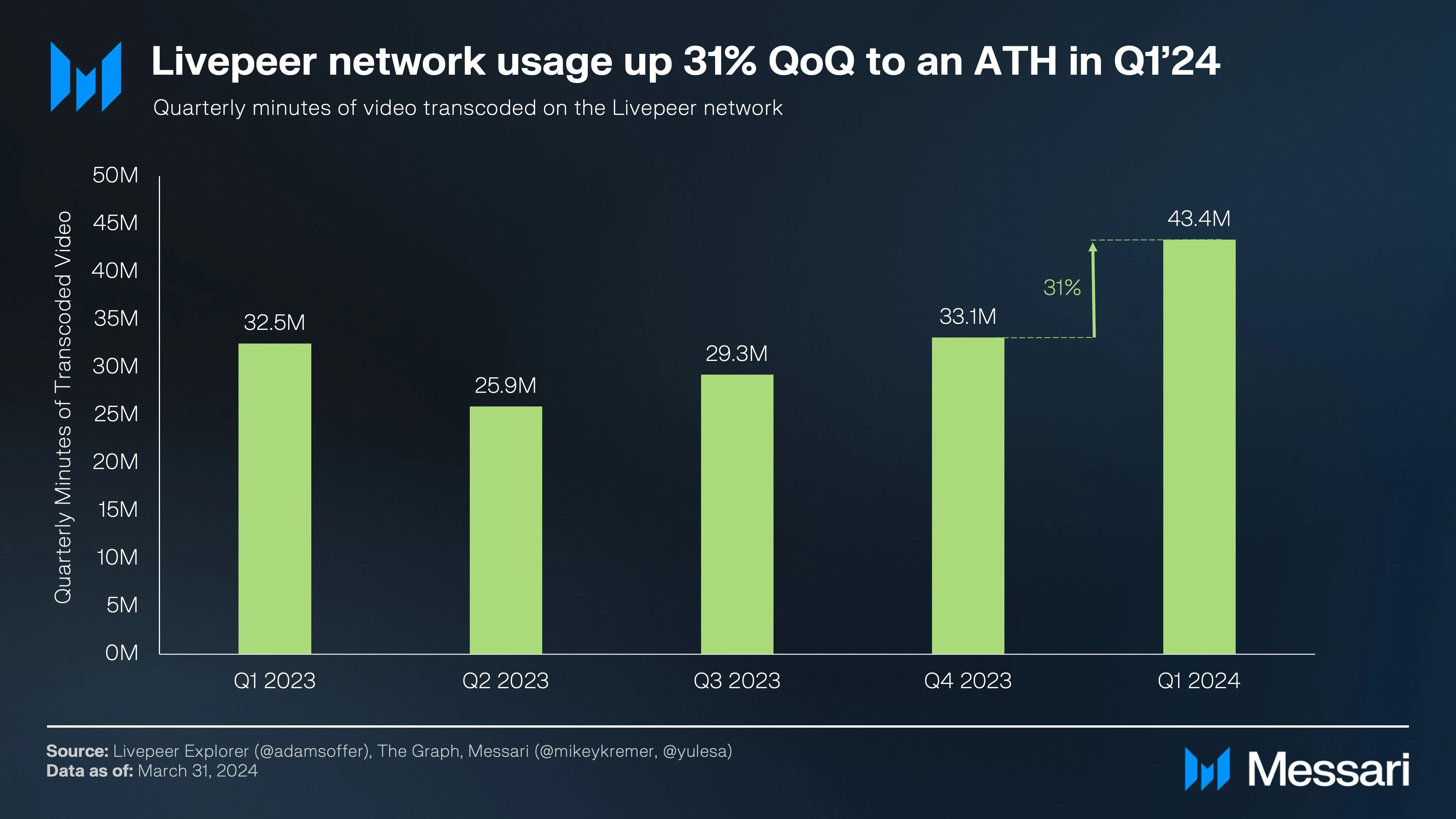
Livepeer network usage grew 31% QoQ in Q1 2024
In addition, Livepeer announced that it will launch a subnet with AI computing capabilities. The Livepeer AI subnet allows hardware providers to earn fees by contributing GPUs to AI inference jobs such as text to image, text to video, and image to video. This subnet is a branch of the Livepeer main network that supports new artificial intelligence features while still using the Livepeer protocol for node discovery and payment. Livepeers AI subnet is expected to be launched in three phases. The first phase has been completed and is currently being optimized, with the mainnet scheduled to be launched in the third quarter of 2024.
Near (NEAR)
Introduction
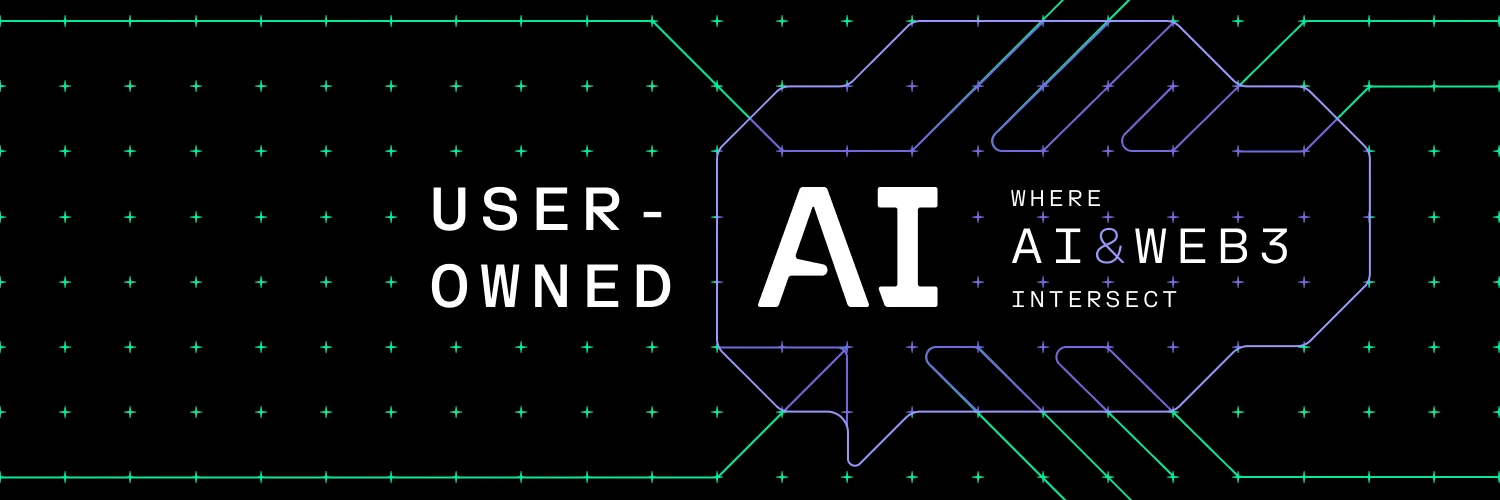
Image source: Official Twitter
NEAR Protocol is a sharding and PoS-based layer-one blockchain designed to incentivize a network of computers to run a platform for developers to create and launch decentralized applications. Unlike other blockchains, the NEAR Protocol network is built from the ground up to be easily adopted by developers and their end users, while still providing the scalability required to serve these users. NEAR currently has three main narratives, namely Chain Abstraction (CA), Data Availability (DA), and Artificial Intelligence (AI).
focus point
According to Messari survey data, NEAR Protocol is one of the biggest winners in Q1 2024. NEARs TVL in the first quarter was $335 million, a 163% increase from the previous quarter and a 547% increase from the previous six months. The number of daily active addresses was 1.2 million, a 42% increase from the previous quarter and a 377% increase from the previous six months. NEARs stablecoin market value increased by 176% from the previous quarter to $214 million. The total number of NEAR accounts exceeded 100 million.
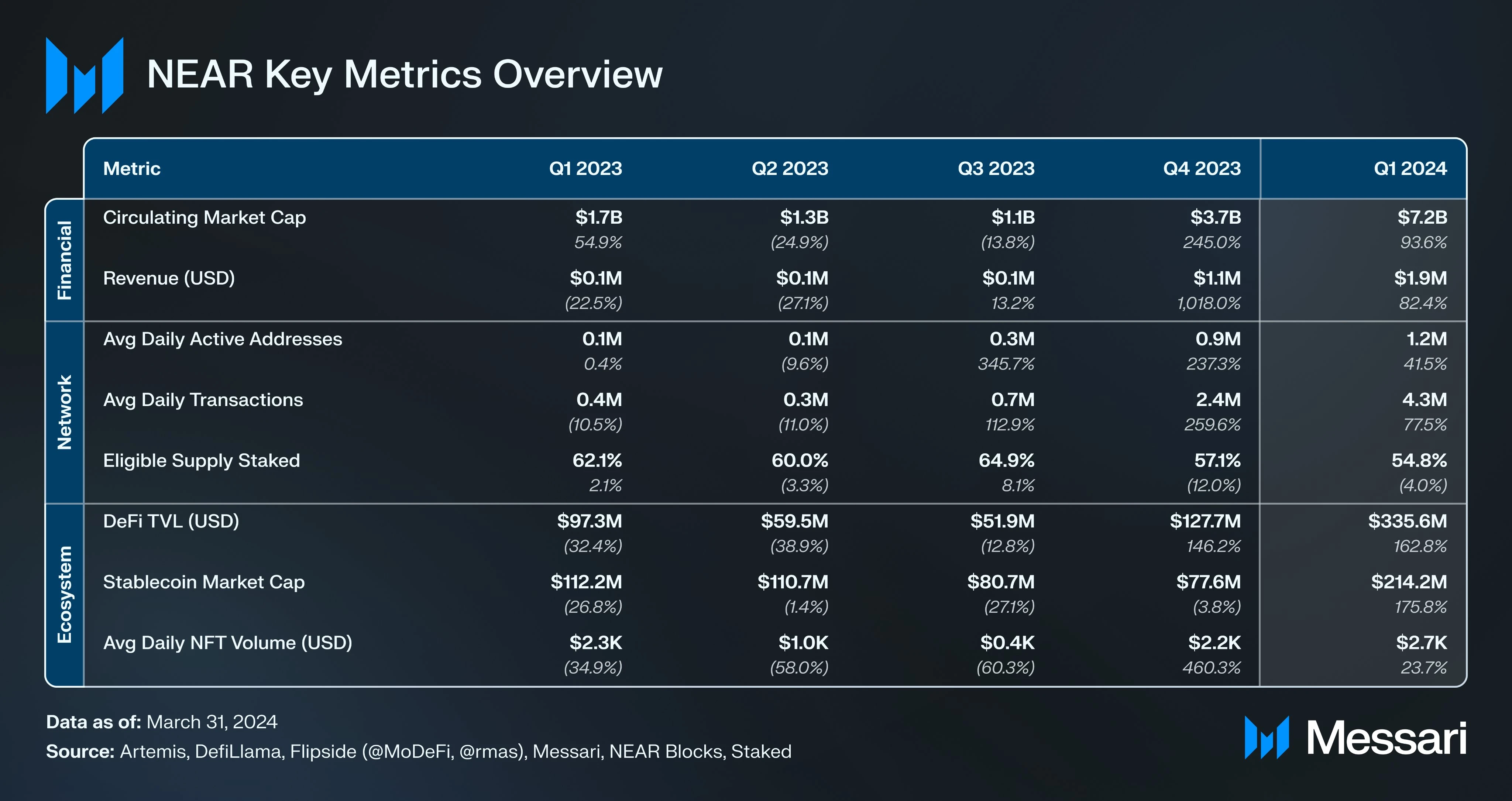
In addition, judging from the official developments in Q2 this year, the focus is on developing product AI-related businesses, including plans to use AI chatbots to help people without coding experience create DApps, cooperating with the NEAT protocol, an aggregation protocol designed for scaling AI applications on NEAR, to accelerate the development of AI applications with a 1 million NEAR staking delegation, and the NEAR Foundation launching an incubation program to build infrastructure for users own AI.
Render (RNDR)
Introduction
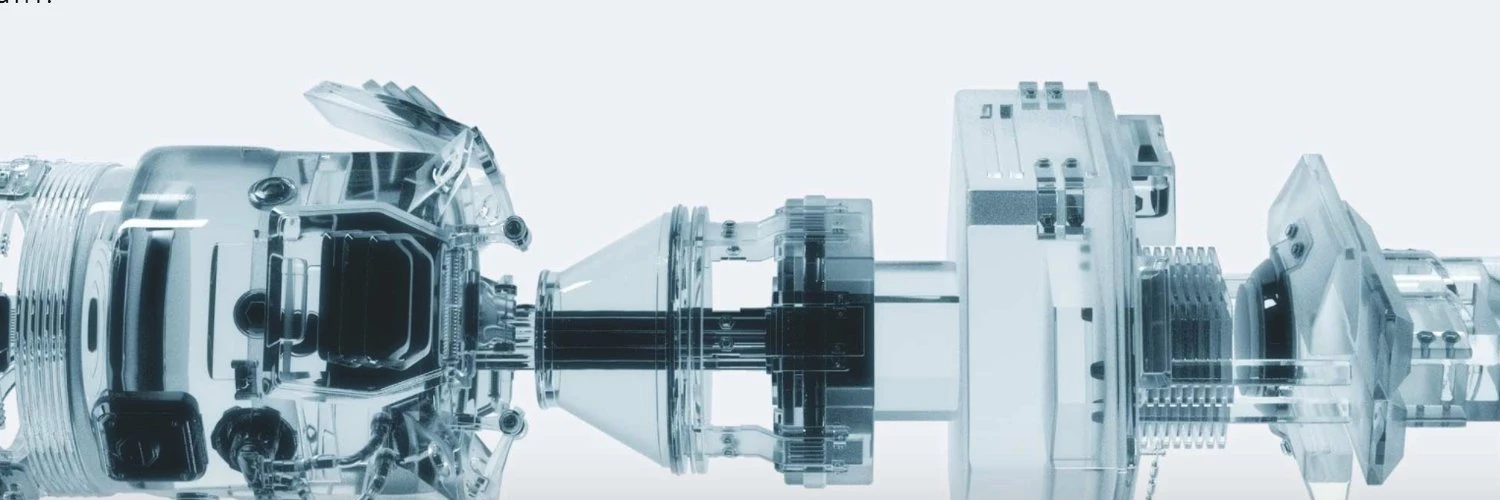
Image source: Official Twitter
Render Network is a GPU-based decentralized rendering solution provider that provides decentralized graphics processor computing power for the next generation of 3D content creation. RNDR is its native utility token. As a decentralized GPU rendering platform, Render Network aims to advance the next generation of rendering and AI technologies, allowing artists to scale GPU rendering work to high-performance GPU nodes around the world on demand.
focus point
At present, the reasons why Render is popular and attracts a large number of practical application needs are:
LightField Labs, in which Render Network’s parent company OTOY invested in February this year, has seen rapid developments in holographic imaging technology, and the digital restoration process requires rendering work;
Partnership with Stable Diffusion, large language model generation of images, text-to-video/3D scenarios can all be supported by Render Network;
Apple briefly mentioned Octane, the creative workflow software powered by the Render Network, during its keynote presentation showcasing the M 4 chip in its latest iPad.










